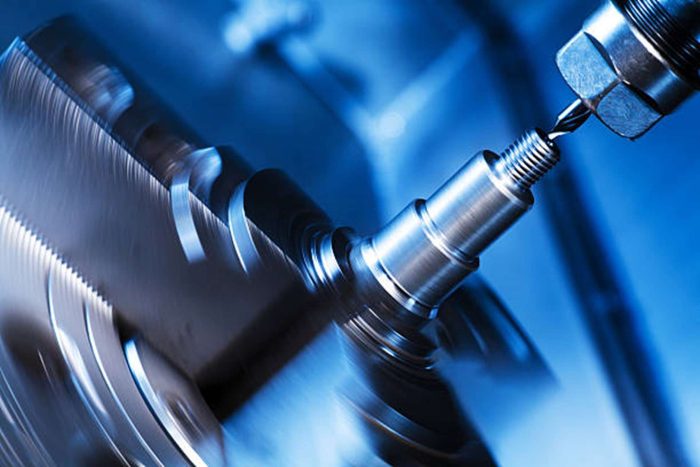
Drilling machine
Drilling and boring are essential CNC machining techniques used to create and refine holes in parts and products with speed and accuracy. Still, the drilling vs boring debate continues to raise questions among engineers, machinists, and procurement teams looking for the most effective hole-making method.
While drilling initiates a hole in a solid material using a rotating cutting tool, CNC boring enlarges or improves an existing hole using a single-point cutting tool. Both are subtractive processes but serve different purposes in terms of depth, diameter, and finish precision.
These machining techniques are widely used across industries like aerospace, automotive, oil and gas, and heavy equipment manufacturing. Choosing between the two—or using them together—depends on design requirements, hole size, and finish accuracy.
At ProleanTech, we combine both methods to deliver high-tolerance, custom-machined parts tailored to diverse industry needs. Our CNC hole-making solutions are engineered for performance, reliability, and exacting detail.
Let’s break down the differences, working principles, and ideal use cases of drilling vs boring.
Introduction To Hole Drilling
The drilling process uses a drill bit to create a hole in a material, typically in a straight line. It applies to creating straightforward holes, such as for screws or bolts. Boring involves enlarging an existing hole to a specific size and shape using a single tool. On the other hand, Reaming is a finishing process that smooths and refines the walls of an existing hole. The purpose of remaining is to achieve precise dimensions and surface finish.
Understanding these processes is essential for those involved in the manufacturing and machining industries. Knowing these operations and their differences helps to choose the appropriate approach based on specific needs.
What is the Meaning of Drilling?
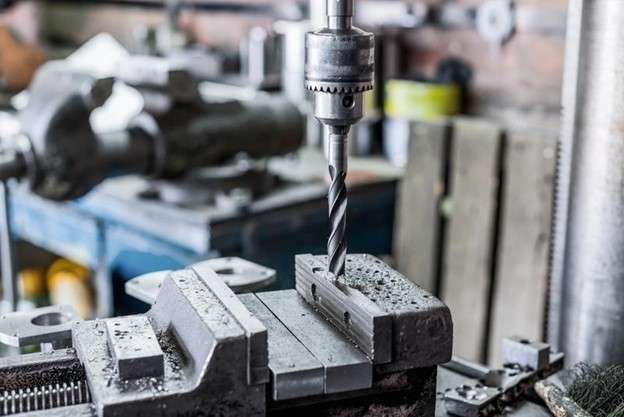
Drilling process
Drilling is the most popular method to generate a hole or cavity in a solid workpiece. A drilling machine is responsible for this operation, which utilizes a rotating drill bit that rotates at high speed with intense pressure.
As the drill bit rotates, it creates chips of material and is removed by the flutes or grooves on the drill bit’s surface, allowing the drill to continue progressing into the workpiece.
Types of drilling
There are several drilling types according to the drill-bit characteristics, intended use, and capability. Twist drilling is the most common, using spiral grooves to cut material.
Gun drilling is for deep, narrow holes, ideal in aerospace. Centre drilling creates a guide mark to ensure accurate placement of larger drill bits.
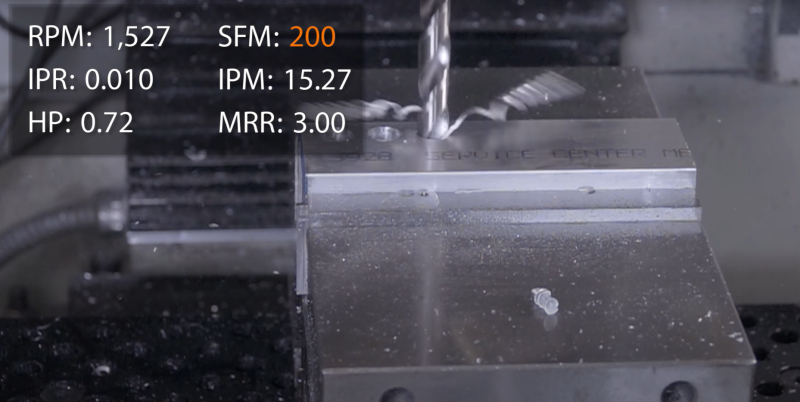
Twist drilling
Twist drilling: It involves the use of a drill bit with two cutting edges that spiral around the bit. The twist design guides the bit into the material, while the sharp cutting edges remove the material as the bit rotates. It is appropriate for those applications where holes are not too deep and does not require extreme precision.
Gun drilling: It involves using a specialized gun drill bit with a long, narrow flute to remove the material. This drilling is specialized for long and straight holes with a small diameter.
Centre drilling: This process creates a small divot in the center of a workpiece that guides the drill bit. The center drill bit is dedicated to a small, conical hole as a starting point for other drilling operations.
Applications of drilling in various industries
Regardless of shape and size, various industries rely on drilling processes to create holes and cavities in the parts or products. Automotive, medical, aerospace, oil & gas, electronics, construction, and many other industries use drilling to manufacture several parts or products.
Advantages and disadvantages of drilling
Drilling is a versatile manufacturing operation that creates holes in an extensive range of materials.
- Drilling is quick and efficient, making it ideal for high-volume production.
- Advanced drilling machines allow the precise positioning of holes with consistent size.
- Depending on the specification, you can do drills with a suitable drill bit.
- The cost-effectiveness makes drilling an economical choice for various applications.
However, the drilling operations have a few drawbacks too. It can result in a poor surface finish, wear on the drill bit, and size limitations.
The Boring Process
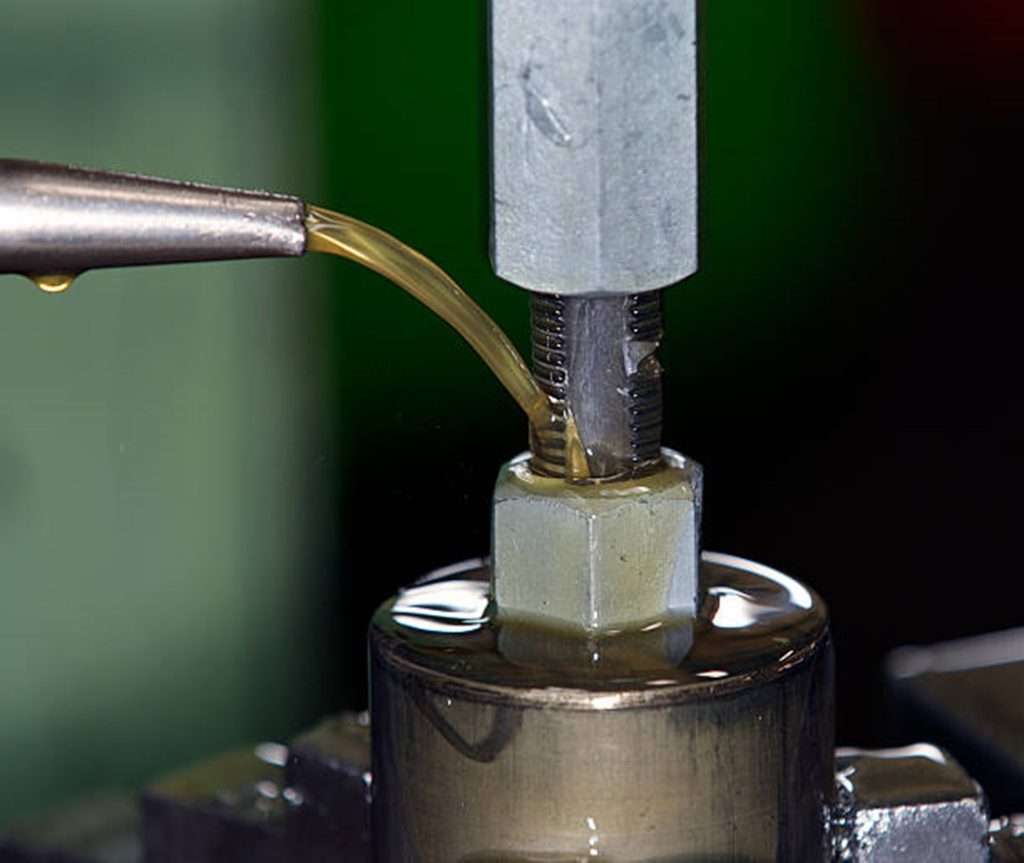
The boring operation
The boring process refers to creating precision holes with tight tolerances or modifying existing holes to meet specific requirements. Regarding the drilling process (boring vs. drilling), it enlarged the drilled hole with desired specifications.
The boring machine used in this operation consists of rotating CNC boring tools like a boring bar, which removes material from the workpiece. The cutting tool mounted on a carriage moves along the workpiece length and can be adjusted to control the size and shape of the hole.
Types of boring
There are several types of boring, including:
Horizontal boring: This boring type is used to create holes parallel to the workpiece surface, making it ideal for applications where the workpiece is too large or heavy to be rotated.
Line boring: It creates long, straight bores in large workpieces like engine blocks and cylinder heads.
Jig boring: This process is very precise holes with tight tolerances. Jig boring machines are typically used for tool and die work and in the aerospace and automotive industries.
What is the Main Purpose of Boring?
Boring can be used to create different holes, including through holes, blind holes, and stepped holes. The process is commonly used in manufacturing machinery, engines, medical, implants, aerospace parts, mold, dies, and other precision components.
Advantages and disadvantages of boring
Boring produces smooth, high-quality holes with clean edges that are suitable for a range of industrial applications. Let’s overview some of the other key advantages.
- Boring machines are highly precise and can produce accurate, high-quality holes to tight tolerances.
- A wide range of hole sizes and shapes is possible with boring, making them useful for diverse applications.
- It offers speed manufacturing when it comes to hole creation.
- The surface finish of the hole wall is smoother with boring compared to drilling.
Above all, boring has some limitations regarding shape, size, and material compatibility. It is challenging to create holes in hard-to-reach areas. In addition, some boring materials may be too hard or too brittle for the cutting tools used in boring machines.
The Reaming Process
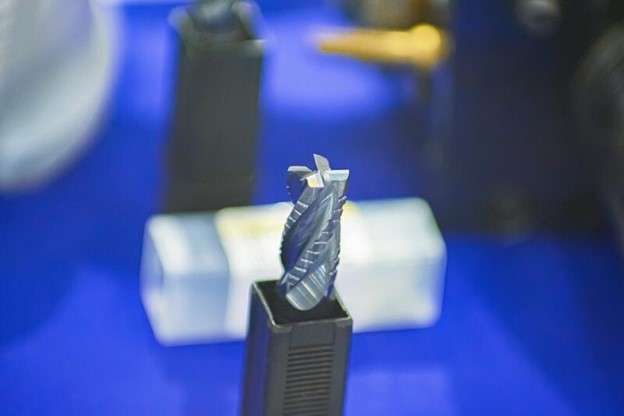
Reamer tool
Reaming is a machining process that involves enlarging a pre-existing hole in a workpiece to achieve greater precision, smoothness, and roundness. The method uses a rotary cutting tool called a reamer, which contains a series of parallel cutting edges on its cylindrical body. It rotates with high RPM and moves longitudinally into the hole. Finally, it removes a thin material layer, leaving a precise and uniform diameter.
Types of reaming
Further, there are three common reaming types, hand, machine, and adjustable.
Hand reaming: The reamer is guided manually and turned by hand.
Machine reaming: A machine tool, such as a lathe or drill press, dictates the reamer.
Adjustable reaming: The reamer can be adjusted to achieve different diameters or tolerances.
Applications of reaming in various industries
Reaming is used in many industries, such as automotive, aerospace, medical, and manufacturing. Some typical reaming applications include connecting rods, bearings, medical implants, aircraft parts, and many more.
Advantages and disadvantages of reaming
Reaming is a wise option to improve a drilled hole’s dimensional accuracy and surface finish. In addition, it has several other advantages that make it a popular machining process in various industries.
- It is a highly precise process that can achieve tight tolerances in a workpiece.
- The reamed hole provides a smooth surface free from burrs and other imperfections.
- It is an ideal process to achieve a tight seal, especially when a leak-proof joint is required.
- Reaming is relatively easy and quick to perform, and many reamers are available at affordable costs.
However, there are also some disadvantages. One of the biggest challenges is that it can be challenging to ream holes that are not straight or have irregular shapes. Additionally, reaming can generate a significant amount of heat, which can cause issues with the workpiece, such as warping or distortion.
Related: CNC Boring Programs
Try Prolean Now!
Comparison and Contrast: Drilling Vs. Boring Vs. Reaming
As we previously discussed, drilling, boring, and reaming are all associated with creating a hole in the material. Although these processes are similar in some ways, they also have significant differences.
Now let’s overview the similarities between them.
- Whether you perform drill, bore, or ream, all three processes involve the removal of material from a workpiece to create a hole.
- The surface finish might not be excellent in both drill and bore. Only reaming can optimize the smoothness at the optimum level.
- The diameter and depth of the hole are controllable in each process to achieve the desired size and shape.
- Lubrication and coolants are necessary to prevent damage to the cutting tool and workpiece.
- All three are compatible with metal, wood, ceramic, and plastic.
- These processes can be done by hand or using machine tools.
What is the Difference Between Boring, Drilling, and Reaming?
There are many differences between these three processes regarding process, equipment, and applications. Drilling is the primary operation, even if it needs to be processed with other procedures like boring. Although reaming and boring both process the existing hole, there are fundamental differences between reaming vs. boring.
Now, let’s discuss them through a comparison table.
| Drilling | Boring | Reaming |
| Drilling involves using a drill bit that rotates and moves vertically into the material, cutting out a cylindrical hole. | Boring refers to enlarging a pre-drilled hole by removing material from the inner surface using a boring bar or head. | Reaming is a finishing process that involves using a multi-point cutting tool (called a reamer) to smooth out and refine the surface of an existing hole. |
| The purpose of drilling is to create new holes in the workpiece. | Boring enlarge an existing hole | Reaming improves the diameter and surface finish of an existing hole. |
| Drilling is cost-effective among these three processes | Boring is more expensive than drilling due to the need for specialized equipment and cutting tools. | Reaming is also more expensive than drilling. |
| Drilling creates less precise holes. | Boring can achieve tighter tolerances than drilling & reaming due to its more significant control over diameter and depth. | Reaming perfects the precision and surface finish. |
| Drilling is commonly used in construction structures, oil & gas, electronics, jewelry, and holes for fasteners. | Boring is renowned for manufacturing large objects (such as engines and turbines), holes for bearings, and other cylindrical parts. | Reaming is bearings, shafts, firearms, and musical instruments. Furthermore, removing any remaining burrs or rough edges from a drilled or bored hole is the best approach. |
Comparison Table
Factors to consider when choosing between drilling, boring, and reaming.
Several factors must be considered when choosing between drilling, boring, and reaming. Firstly, you need to diagnose boring vs. drilling and the necessity of reaming based on the required precision and application.
The following are the other factors you need to consider to get the intended result.
- Tolerances and specifications required by the project or industry standards.
- Desired surface finish and dimensional accuracy of the hole.
- Type of material being machined.
- Hole size and depth.
- Production volume and speed.
- Available equipment and tooling.
- Safety issues, such as the risk of chatter, vibration, or heat buildup.
- Cost and budget.
- Operator skill and experience.
- Possible tool wear and maintenance requirements.
Conclusion
Boring, drilling, and reaming are three processes used to create holes in the material. Although all these have the same ultimate purpose, they differ in several aspects, such as process, precision, applications, and capabilities.
However, there are several factors you need to consider while choosing the perfect process to create a hole in the workpiece. Understanding required specifications and tools helps get the best result within the estimated budget.
ProleanTech has a team of experienced engineers with advanced drilling and boring machines. We offer CNC manufacturing services for a wide range of applications. Don’t hesitate to contact us if you are looking for deep hole drilling, deep boring, contour boring, remaining, or any related service. We can provide the best solutions for your projects.
FAQs
What is the difference between drilling, boring, and reaming?
Drilling creates a new hole, boring enlarge an existing hole, and reaming refines the surface of an existing hole. Each process has different precision levels and applications.
Which process among drilling, boring, and reaming offers the highest precision?
Boring and reaming offer higher precision compared to drilling. However, reaming is specifically used for improving the surface finish and diameter precision of an existing hole.
When should I use boring instead of drilling?
Boring is used when you need to enlarge an already existing hole and achieve tighter tolerances. It’s also used when you want a smoother surface finish compared to drilling.
Why would I need reaming?
Reaming is used when you need high precision in terms of diameter and a smooth finish for the hole. It’s typically used as a finishing process after drilling or boring.
Is drilling cost-effective compared to boring and reaming?
Yes, drilling is generally more cost-effective than both boring and reaming. However, the latter processes offer higher precision and better surface finishes.
Can all materials be drilled, bored, or reamed?
These processes can be performed on a variety of materials like metal, wood, ceramic, and plastic. However, the suitability depends on the material hardness, brittleness, and the specific application requirements.
What are the common applications of drilling, boring, and reaming in industries?
These processes are widely used across industries like automotive, aerospace, medical, construction, oil & gas, and electronics for creating and refining holes in various components.
What factors should be considered while choosing between drilling, boring, and reaming?
Several factors such as tolerances required, desired surface finish, material type, hole size, and depth, production volume, available equipment, safety issues, cost, operator skill, and tool maintenance requirements need to be considered.




What I was looking for ! Thanks for this detailed comparison of drilling vs boring.
Thank you! Great to know that you found this article informative